Catoyntus is one of the most beautiful garden flowers. Externally, it is very similar to all the famous Barwin, however, there are several differences between them. Blooming catarentus is guaranteed to become a highlight of the garden. That is why it is very popular among professional gardeners and landscape designers. How to plant and grow Cataranstus on your household plot - let's tell me further.
Types and varieties of catarantus
The birthplace of this interesting plant is the island of Madagascar. At its place of origin, as well as because of the similarity with Barvinka, the flower of Catoyntus is often called Madagascar Barquark. In the wild most often it can be found in the rainforest of Southeast Asia, Africa, as well as in some regions of the Pacific.
It is a catrantus plant evergreen bush with abundant bloom. The trunk of culture is quite strong, as for a shrub, while branched well. Catarytus leaves of a dark green color of the right shape. In the middle of the leaf you can observe a beige venue, which gives it additional elegance. The height of the adult catarentus bush can reach 0.6 meters. At the ends of young shoots, beautiful five-point inflorescences are formed. The color scheme ranges them from gently white to dark burgundy.
There are two types of catarentuses:
- Bush.
- Ampel.
To create garden compositions, the first of them is most often used. Catarantus varieties differ mainly by their inflorescences, namely, their shape and color. The most popular of them:
- Ocellatus.
- Orchid.
- Grape.
- Aprikot.
- Red.
- Parasol.
Cataryatus landing and reproduction
Landing and care for the catarentus does not provide special problems even for a novice gardener. Excellent shrub feels like on an open garden, and in a pot indoor. At the flower, the catarentus is most often grown as an annual plant, and in pots - as a perennial.
One of the most important conditions for the successful cultivation of the catadus is the quality of the soil. The soil must necessarily be a mustache. It can be prepared independently. To do this, it is enough to mix in equal parts of the dermacy, sand, peat and humus. When growing a plant in the conditions of the room, you can buy a specially prepared soil in a flower shop. The most optimal mixture for the catarantus is "geranium". When planting a plant in a pot, the fact that the roots are developing very violently, therefore, for normal development, it will be necessary for a pot with a large volume of soil.
Cataryatus reproduction is carried out in three ways:
- Shining. Strenches for landing are harvested at the end of March - early April. To do this, a well-formed escape is cut off the end and cheer into the ground. Corn roots are formed pretty quickly. The only condition is the right and timely watering, as well as good care. After the formation of a full-fledged root system, the finished seedling can be resettled at a permanent place.
- Catarytus cultivation from seeds. This is the most popular method of growing an annual catrantus on the flower beds among the gardeners. Seeds are planted in a well-swollen soil. Therefore, in a cold climate latitudes, they first grow seedlings in a greenhouse or greenhouse, and then planted in an open ground. Catarantus seeds are quite large and have a dark brown shade. They are placed in the soil and pressed to a depth of no more than 1-2 cm. After that, the capacity is covered with a film and put a place in closed from the sunny rays. The seeds of Catarantus are distinguished by an excellent germination, and usually sprouts appear 10 days after landing. Picking is carried out only after the plants will appear 4 of the present sheet. The planting of the catadus into the ground produce at least half a meter between individuals. A few days after the landing, the seedlings are pinching. Make data manipulation so that the bush is quite branched.
- Decision bush. Similarly, like shilling, the division of the bush is carried out in early spring. To do this, take a well-shaped bush and divide it in such a way that on every decene it was good root. Dellets are usually accepted very well in a new place, regardless of whether it is flowerba or Vazon.
Care for Cataranstus
Care rules:
- Since the birthplace of Catoyntus are rainforests, this plant loves warmth. The most optimal temperature for abundant flowering and rapid growth of the plant + 27⁰С ... + 29⁰С. The decrease in temperature below + 10 ° C can lead to the death of the culture. With the cultivation of a catrantus in the conditions of the room, for the summer period the pot is better to put it on the balcony or terrace.
- Catarantus in the open soil must be grown on the club with good illumination, as this plant loves the sunlight. For growing in pots, windowsills with orientation to the East or West are better. The room plant should not immediately put on the straight sunshine. It is better to do it gradually. Otherwise, culture can get bores of leaves.
- Watering the plant must be constantly. You need to ensure that the ground does not stop. However, the soil should be well drained, because moisture stagnation can lead to the occurrence of fungal diseases. It is also worth noting that the catarentus loves the wet air. It affects its origin. Therefore, a slight spraying of the plant with water can be carried out constantly. The lack of solar rays and the oversupply of moisture can cause a delay in the development of the plant, so there should be enough space for each of them. If seedlings grow too thickly, they should be switched.
- During the flowering period, the plant requires constant feeding. Fertilizers contribute with periodicity of 10 days. To do this, it is best to use balanced feeding for flowering plants. In this case, the flowering and development of the plant will be the most optimal. When growing a catrantus at home, it is necessary to take into account the rapid growth of its roots. In this case, it is necessary to either pick up a large container, or prepare for periodic transfers. The lack of space for roots can cause plant degradation, slowdown in growth or his death.
Cataryatus diseases and pests
Like most of the representatives of flower plants, Catarantus is subject to the harmful influence of diseases and pests. The emergence of both the first and second is mostly connected with the wrong Careatte care.
The most common diseases of culture are a variety of fungi. Their activity is primarily associated with irregular irrigation. Bad drainage of the soil and stagnation in it provokes the appearance of fungus. With its livelihoods, the latter allocate deadly toxins that affect the root system of the plant, as well as stem and leaves. With untimely treatment, all flowerba may die. Fungal diseases are manifested in the form of brown or gray spots on the surface of the leaves. The plant's diseased plant must be removed and burned, and the soil is treated with antifungal drugs.
From pests most often delivered problems - shields, web ticks and a wave. The fight against them is carried out by special insecticides. If you plan to transfer the Cataratus bush inside the room, then it must be carefully examined for the presence of pests. Otherwise, it will be difficult to deal with them.
Wheel can be struggling with folk methods. Their advantages are several. First, you do not need to spend money on the purchase of expensive insecticides, and secondly, they are safer for other plants and animals.
The most effective means for combating this pest is the usual economic soap. It is only 300 grams of 10 liters of water. Soap is thoroughly rubbed on a shallow grater and bred in 10 liters of water. The solution must be thoroughly mixed and strain before filling into the sprayer. Small pieces of soap can score the nozzle.
Also well helped to combat this insect the infers of various plants such as:
- Onion.
- Garlic.
- Tobacco.
- Chamomile.
- Dandelion.
- Sorrel.
- Ground pepper.
Despite the fact that these solutions do not contain chemical components, their incorrect concentration can lead to sad consequences, for example, to leaves burns.
Using a catrantus in landscape design
Since this plant is very warm-loving, in places with a short and cold summer it is used mainly as a room flower. Recently, Cataranstus is often used in suspended compositions. For this use ampels. The suspension looks like flowering very amazing. She can decorate the walls of the building, balconies, lighting poles in the garden.
At the flower beds mainly grow annual varieties. The beautiful appearance of the catrantus in the garden can be emphasized using his neighborhood with Barquincom or Balzamin. In the pots with Cataryatus planted petunia or lobelia. The combination of their colors will make the floristic composition flawless. Since the plant will grow very quickly and forms a dense carpet, it is often used as a soil sprocket.
Beautiful leaves, and amazing flowers made Catarantus frequenter of flower and floristic compositions.

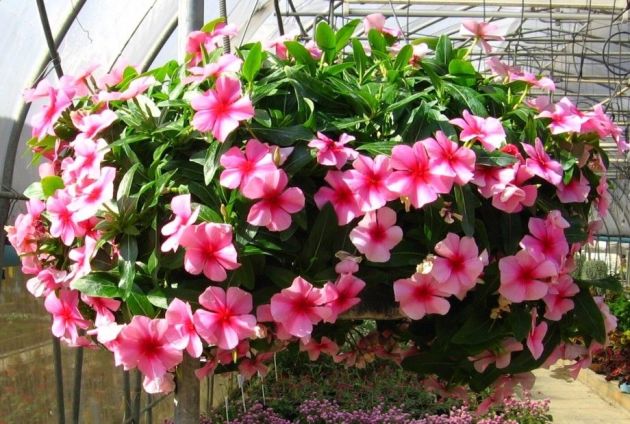
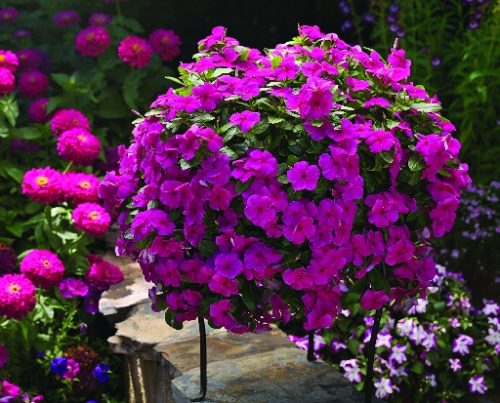
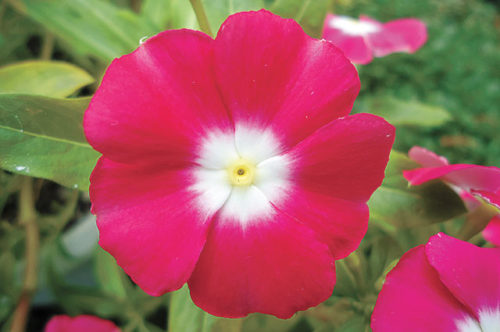
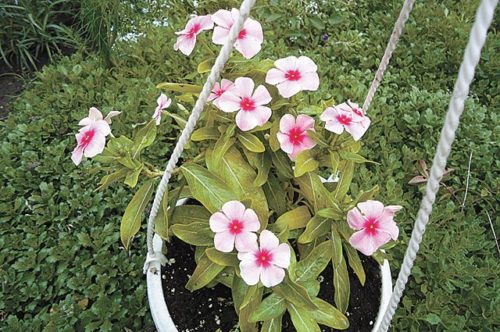
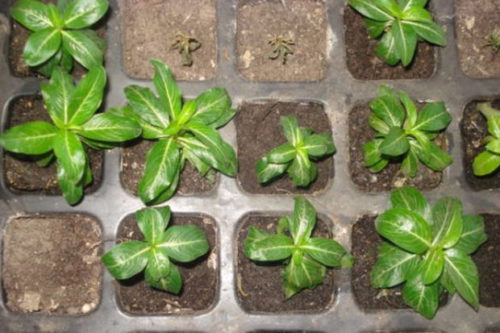


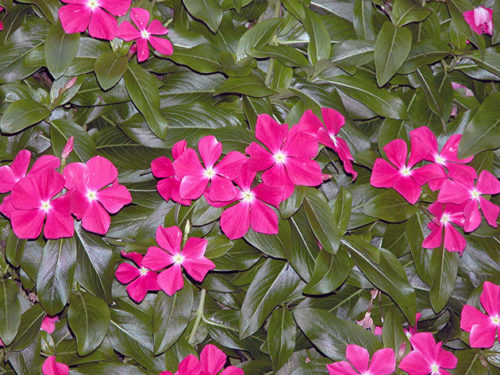
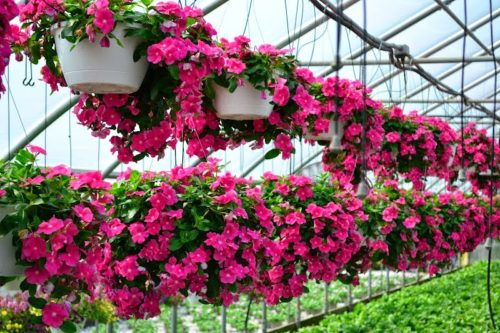
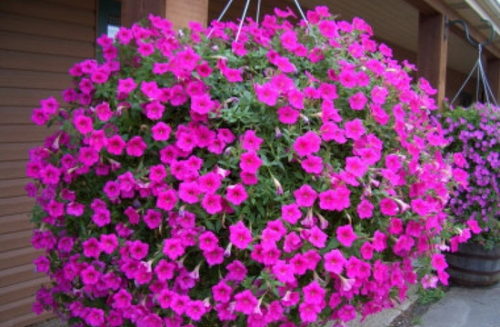
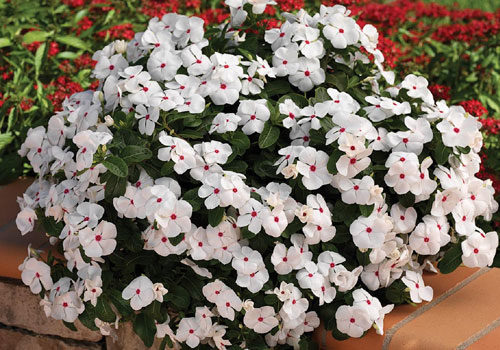
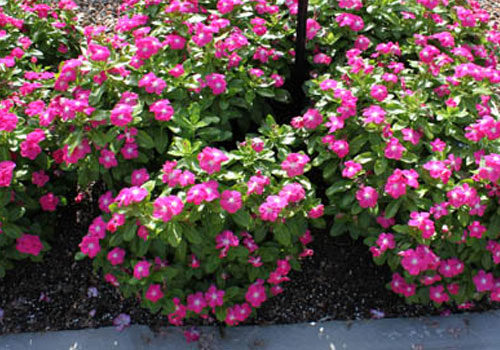












 Start a discussion ...
Start a discussion ...